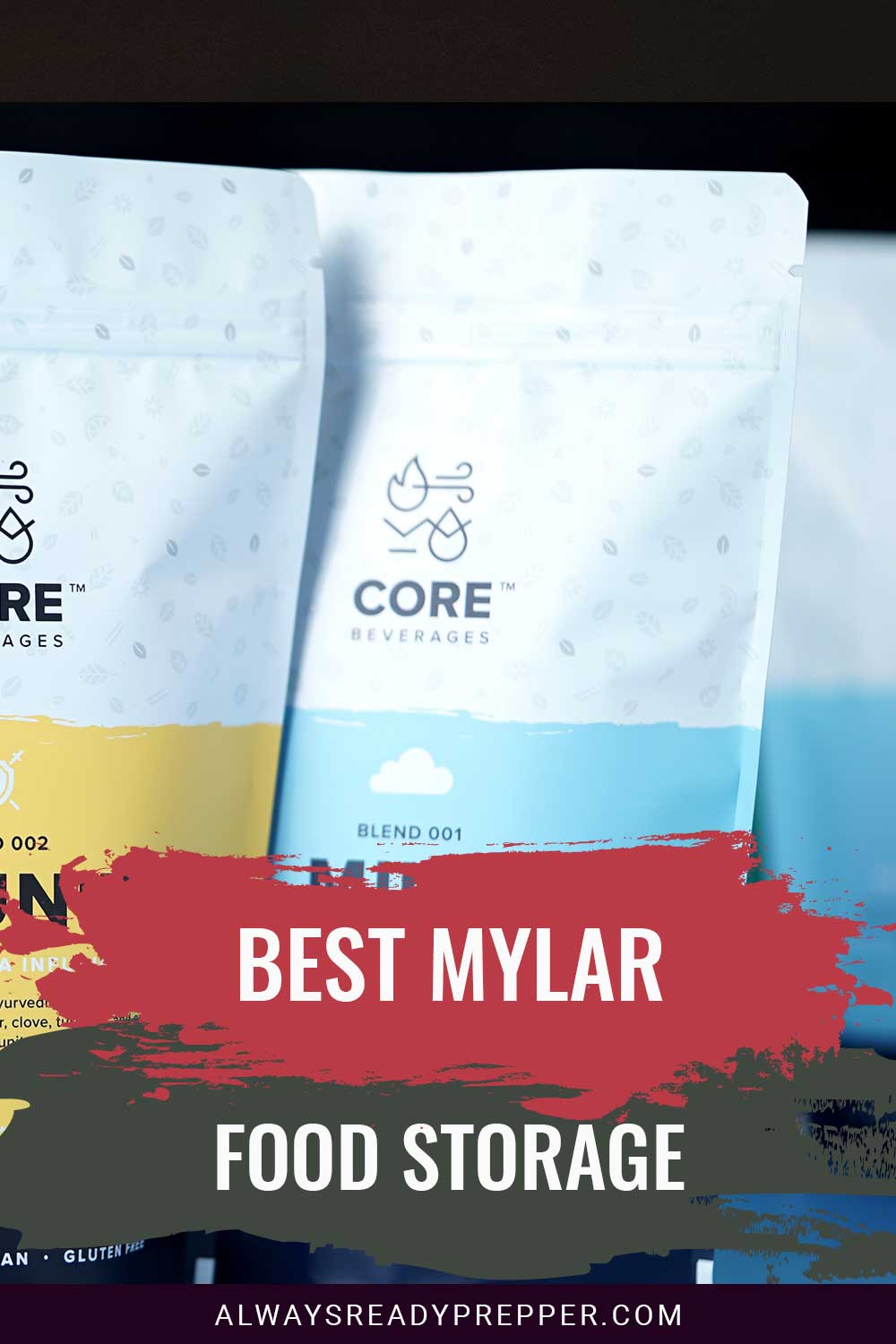Best Mylar Food Storage
We may earn commissions for purchases made through links on our site. Learn more on our about us page.
In history, the Zip-loc bag changed everything; the ability to place a food item into a simple plastic bag to protect it from the elements was revolutionary. The Mylar bag has built upon the idea of the zip-loc by giving the bag a thicker skin and higher-tech covering.
Food grade bags will have a multi-layering system, an inside layer to help shield the foods from contaminants and heat with a middle aluminum-based layer, then an outer layer designed to take the elements and shield out air and moisture from getting within.
But, when it comes to brands, they all say they are the best, and so it goes.

Which Mylar Bag Size is the Most Common?
To answer this, we must consider the different products stored in the Mylar bag, mainly food and other plant-based products. The general size range for these bags is between two inches by two inches for small and twenty inches by thirty inches by eight inches.
However, the most commonly used sizes are the one-gallon and five-gallon sizes; the one-gallon size will allow a person to store perfectly proportioned small amounts of foods like beans, pasta, and rice.
The larger five-gallon bags will be for the longer-term storage needs of the more significant portions of dry goods and foods.
How to Estimate which Size and Thickness You Need?
First, you will need to know the dimensions of the product being stored; dry goods will be measured in weight, while others will be measured in width and length. Once you have this information, you can find the appropriate-sized Mylar bag to house the needed items.
The more popular sizes mentioned earlier in the article will cover almost all of your basic small-quantity storage needs. This will include rationing or separating the dry goods into smaller, specifically designated amounts.
Which Mylar Bags can Last the Longest?
There have not been any definitive results stating which Mylar bag type will last the longest, but when storing foods that last upwards of thirty years, the Mylar bag will be there.
As for what is known, the sturdiest size of Mylar bag will be the seven-point five milliliters (heavy-duty) one-gallon bag, making it the best all-around choice.
On that same point, the five-gallon bag is designed to keep dry goods and foods for long extended periods, which will be created to keep foods from spoiling for years.
How Many of Those Do You Need?
The exact quantities needed to fulfill your storage needs will depend on what is being stored. For most grains, beans, or similar loose dry foods, there are going to be weight sizes that are needed for distribution, everyday usage, and long-term storage needs.
In some cases, smaller amounts are needed with larger quantities of bags to accommodate those needs. In other cases, the individual’s storage needs may require storing the same product without breaking the mass into smaller pieces.
Which Mylar Bags are not Convenient?
Most of these bags will provide the convenience needed for just about any store or consumable product on the market. However, this storage bag solution will only fit some things out there.
For instance, Mylar bags will not be a good idea for freezer items as certain materials used in the Mylar bag do not hold up well in cold temperatures. Foods like ice cream or frozen fruits and vegetables will be better suited in a cold design bag, not the standard Mylar setup.
Final Thoughts on Best Mylar Food Storage
There are not many tasks the Mylar bag is not up to; there will be a few, but this innovative product has changed the food storage industry forever.
Just like the Zip-loc bag did in its day of invention, the Mylar bag is designed to withstand some of the more challenging elements that nature can dish out over time.
When using this type of bag, think about keeping items dry and free from contamination, but also keep them in mind when needed to store something for a more extended period.



Leave a Reply
You must be logged in to post a comment.